The town of Winona, MN, is said to be named after the Indian maiden Wenonah, who may have been the daughter of either Chief Red Wing, for whom Red Wing, MN, is named, or Chief Wabasha, who lived in the neighborhood of the modern city. Or not.
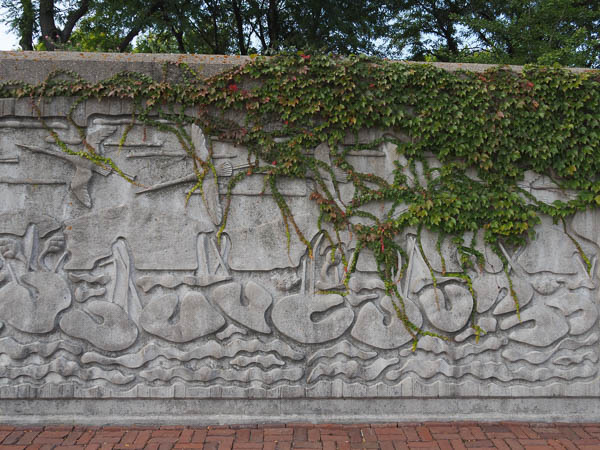
The floodwall beside our dock in Winona depicts pelicans and other migrating birds. The Mississippi Flyway is one of four transcontinental routes used by migrating birds.
During our time on the river we saw pelicans, blue herons, egrets, ducks, geese, and many others including bald eagles.
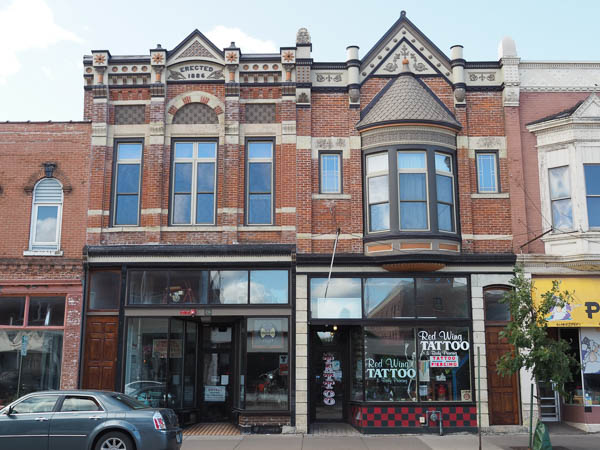
Most of the towns we visited had well-preserved Victorian buildings in the business district. Often their lower level had been adapted to modern usage, as seen in this pair, but the upstairs was preserved.
At the time these buildings were built, many had stores below and residences in the upper stories.
The dock was within easy walking distance of most of the downtowns in our ports of call. In addition American Duchess had three buses that made the journey south with us. They provided "hop-on-hop-off" (HOHO) service to local attractions. Morning buses included local guides who shared the history and culture of the towns we visited.
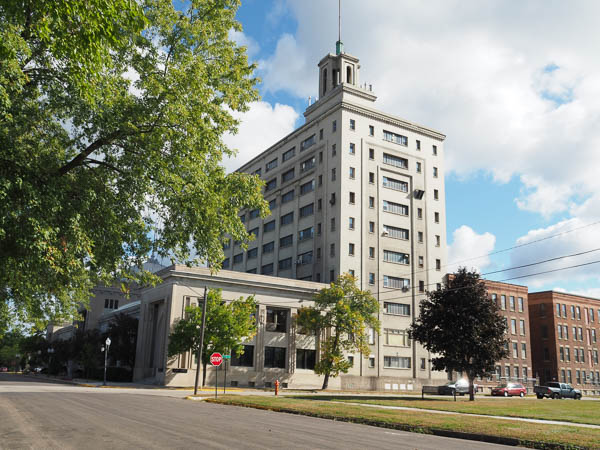
Watkins Incorporated has been in business since 1868 and has been located in Winona since 1885. The business started by selling liniment door-to-door, but today is focused on food products.
Very early in its existence, the company introduced a "trial mark" bottle. If you didn't like their products, you could return them and get your money back ... as long as you didn't use more than the trial amount. The company claims it was the first retail "money back" guarantee.
By the 1940s Watkins was the world's largest direct-sales company. Concise information about the company and its evolution can be found in the Watkins Incorporated Wikipedia article.
This is the factory (brick buildings to the right) and the Administration Building. The museum is behind the administration tower. It had a great display of vintage machines, products, advertising, and of course, a gift shop. I bought some almond extract since I'm almost out.
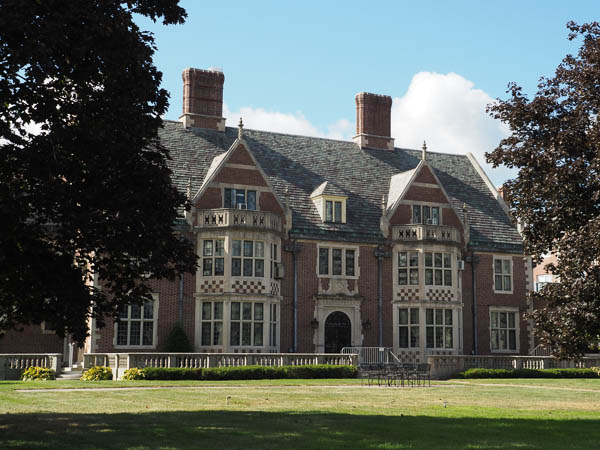
The Watkins mansion, built by founder J.R. Watkins' son in the mid 1920s, is now part of a senior living complex.
I wandered around the facility a bit, attracted by an old garage or stable in the back, and no one chased me away.
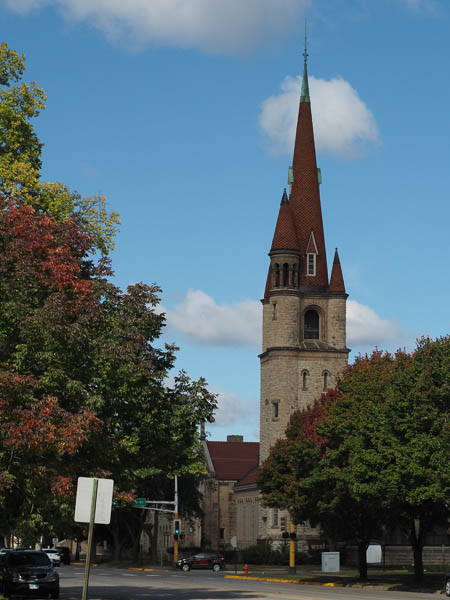
The Romanesque spire of Wesley Methodist Church towered over the residential street that also contained the mansion above and many other Victorian houses in various stages of restoration. The congregations of Central Methodist (established 1855), which was associated with this building, and McKinley Methodist (established 1877) merged in 2010 to form a "reborn" congregation that holds services in this facility.
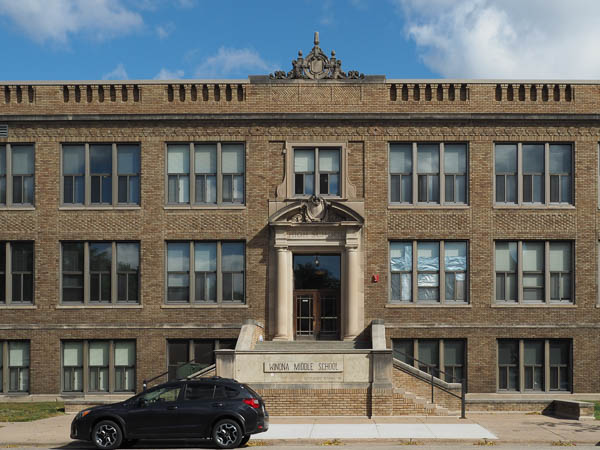
Across the street from the Watkins mansion, the former Middle School, built by Watkins for the city, has been turned into apartments. There were many such conversions on our trip.
I'm happy to see such buildings repurposed rather than torn down or abandoned to "demolition by neglect."
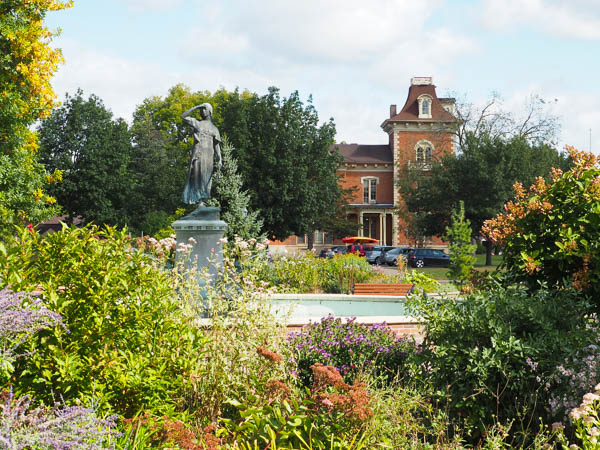
The statue of Wenonah, located in a local park, faces west. The maiden is gazing after her people who were banished to reservations. Another version of the story incorporates the legend of a maiden leaping from a high point to her death to avoid a marriage repugnant to her.
"Winona" signifies a first-born daughter in the Dakota language and is not a personal name.
Early entrepreneur Henry Huff, built the Italianate house in the background in 1857. He ran a ferry across the river and owned a hotel & other businesses catering to new arrivals. After making it big in Winona, he decided to try his hand in the Big City, and moved to Chicago just in time for the Great Chicago Fire of 1871 that wiped out his new investments.
He faded into oblivion, but his wife returned to Winona.
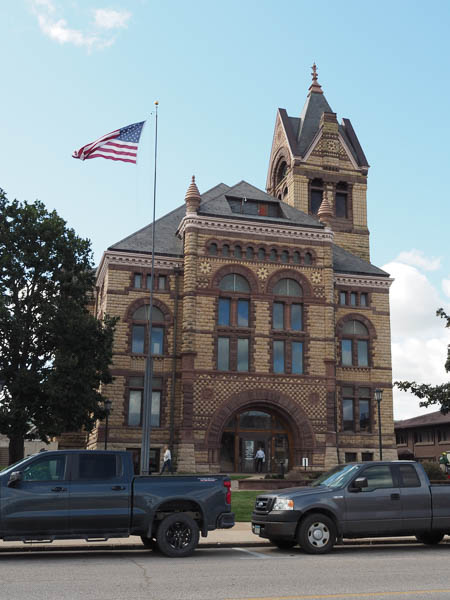
The Winona County courthouse towers over downtown.
A structural failure that triggered the sprinkler system forced the county to decide whether to demolish this historic building or restore it. They chose restoration. Interior pictures and some of the design considerations are documented at the BKVGroup web site.
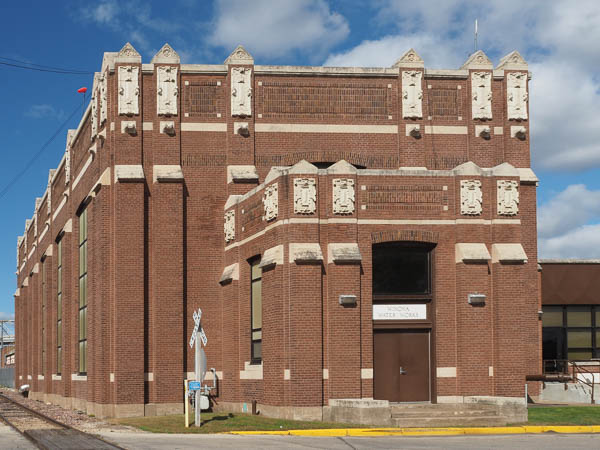
This handsome building adjacent to the docks is the Winona Waterworks. Once upon a time such functional buildings were a source of civic pride and were built to high architectural standards.
This plant is still in use.
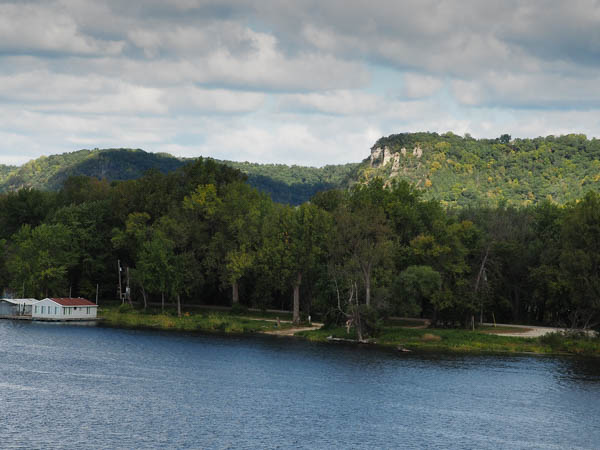
Bluffs lined the river on both sides.
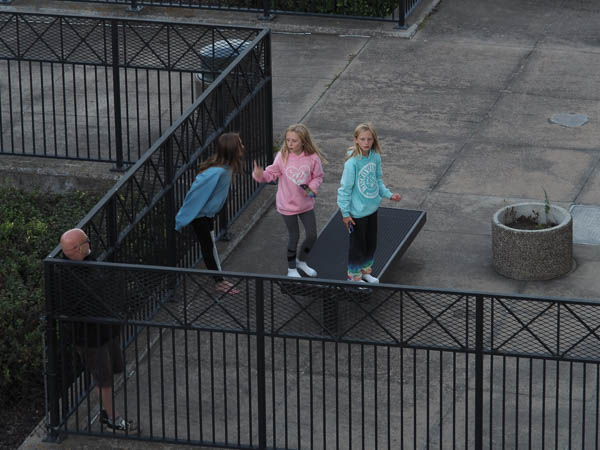
As we passed the lock at Trempealeau downriver from Winona, we appeared to be quite the attraction. It was a chilly evening, but one of the girls was barefoot and the other two were in their stocking feet.
It wasn't clear if the man was associated with them, or just another lollygagger watching the Duchess go through the locks.
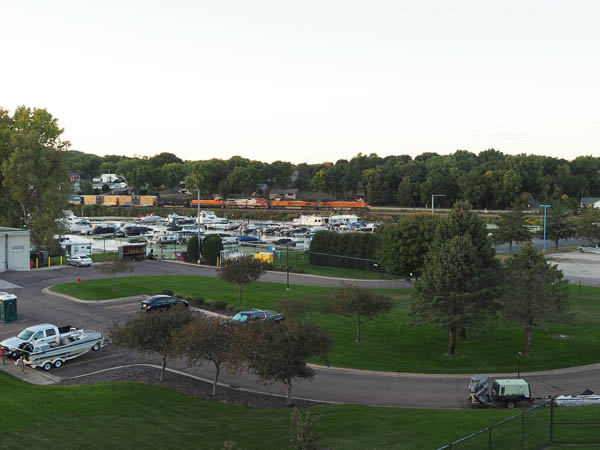
Train tracks followed the river on much of its course. Especially in the northern reaches where the river wasn't very wide, we could hear that "lonesome whistle blow" during the days & nights.
This was the only time I was able to catch a picture of our doppelganger. It is a BNSF (Burlington Northern Santa Fe) train. Its history traces in part to the Great Northern RR built by James J. Hill of St. Paul.
Click your "back" button to return to the previous page or click for our picture album.